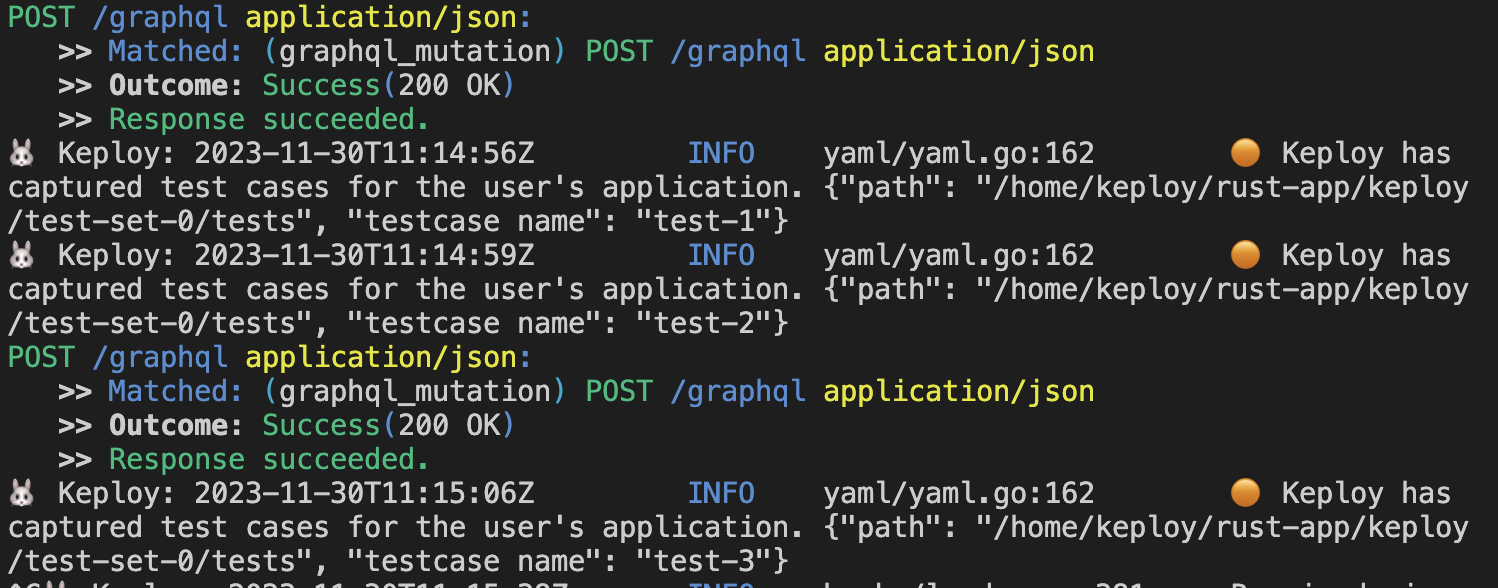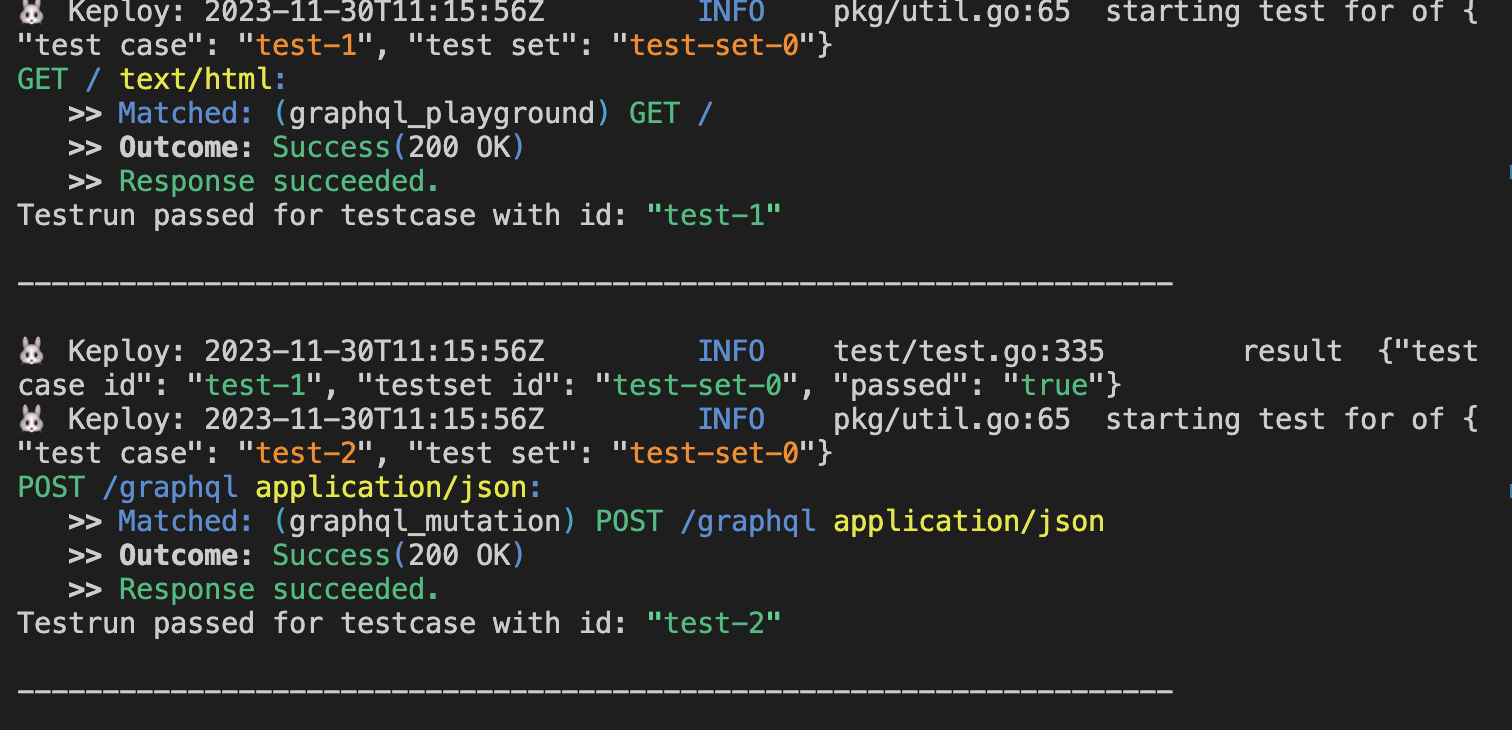GraphQL Application with MongoDB
This is a sample app to test Keploy integration capabilities using rust and MongoDb. Buckle up, it's gonna be a fun ride!
Running App Locally on Linux/WSL 🐧
Don’t have Keploy installed yet?
Before running this sample, make sure Keploy is installed on your system.
👉 Go to Installation GuideClone a sample Rust app 🧪
git clone https://github.com/keploy/samples-rust && cd samples-rust/gql-mongo
We will be using Docker compose to run Mongo on Docker container.
Let's start the MongoDB Instance
docker compose up -d
Capture testcase
sudo -E env PATH=$PATH keploy record -c 'cargo run'
Generate testcase
Go to the localhost:8000 and create some queries.
We will get the following output in our terminal

Run the testcases
Now, let's run the keploy in test mode again:-
sudo -E env PATH=$PATH keploy test -c 'cargo run'

Voila!! Our testcases has passed 🌟
Hope this helps you out, if you still have any questions, reach out to us .